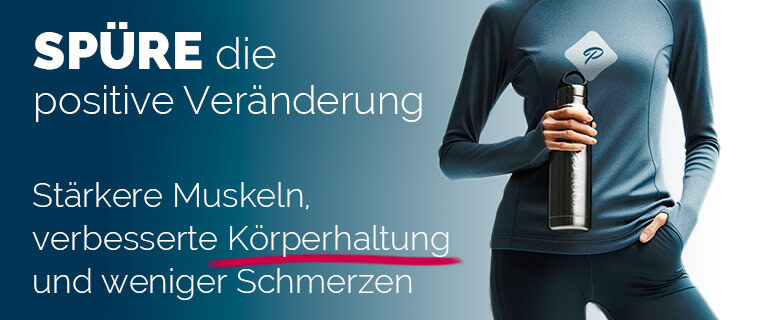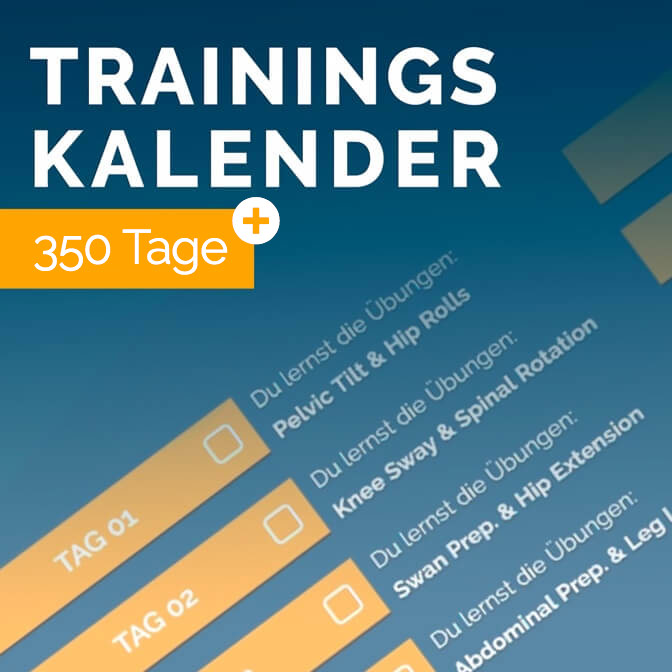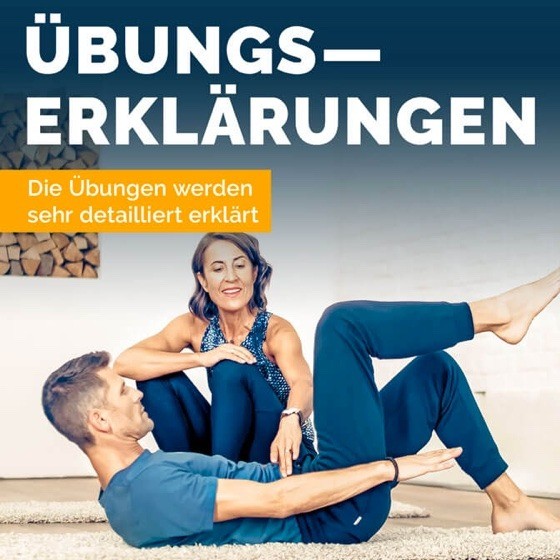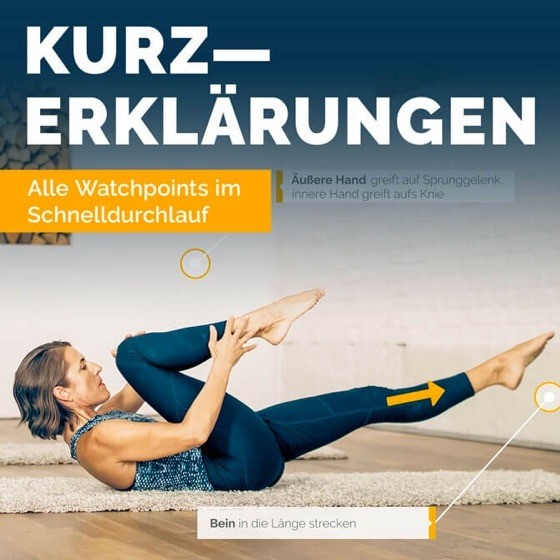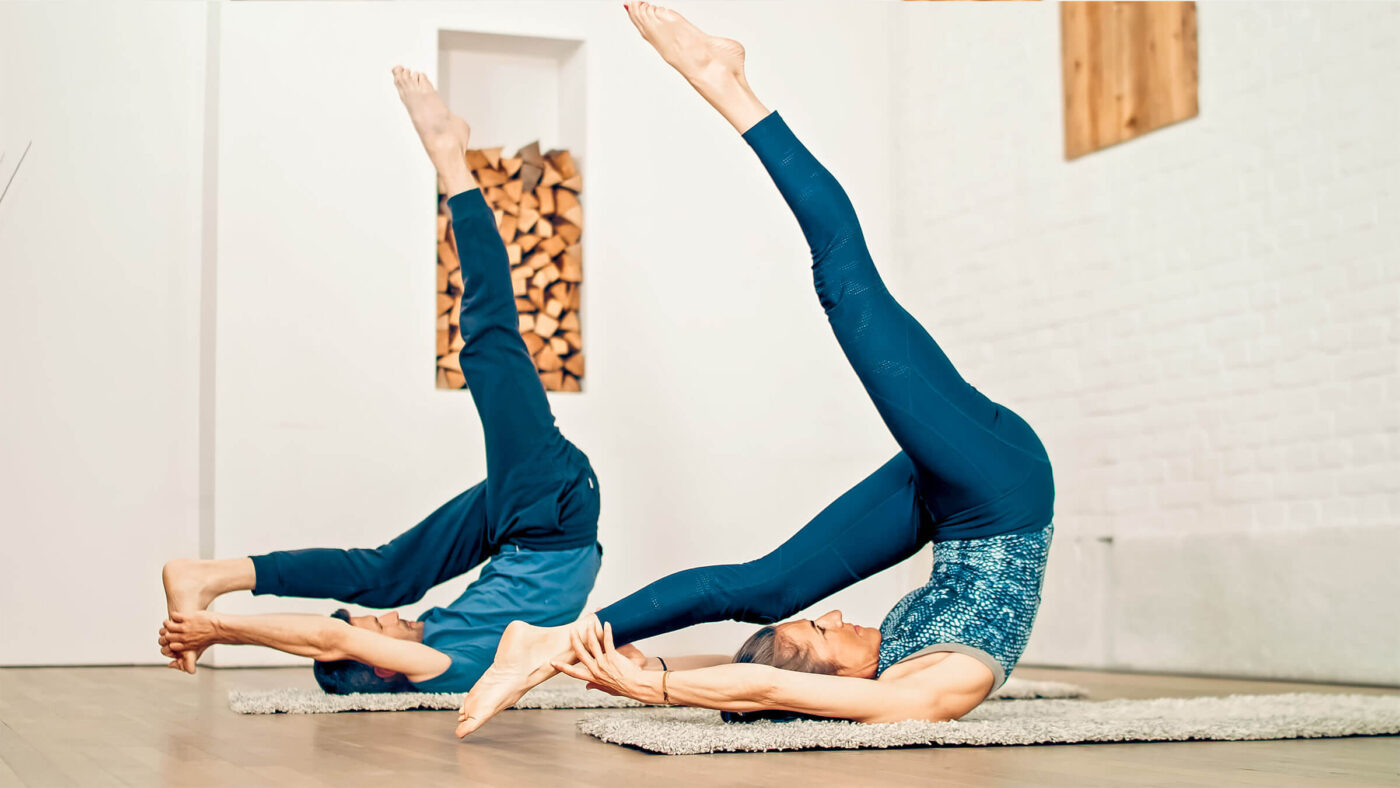
Pilates exercises explained
Control Balance
The Pilates exercise "Control Balance" is the progressive increase of "Roll Over" and "Jack Knife". Here, the weight is balanced on the shoulder blades and at the same time the scissor movements of the legs requires absolute torso stability.
Exercise description
In the supine position bring the legs into table top. Then straighten the legs and during the exhalation let them sink closed from the hip joint towards the mat. The feet are in the point position. The arms are brought parallel to the ears.
Inhaling lift the stretched legs towards the body and release them from the mat, vertebra by vertebra, using the abdominal muscles until they are parallel above the head to the mat.
Exhaling bring the legs stretched towards the ceiling through the activation of the gluteal muscles. Feet are in the point position.
Inhaling hold, the body balances on the shoulder blades.
Exhaling hold the position and lower one leg towards the face. If possible, grasp the ankle with both hands and at the same time stretch the other leg more consciously towards the ceiling. Inhaling begin to change legs.
Exhaling pull the other leg towards the face.
After 4 to 6 scissor movements, roll back onto the mat one vertebra at a time and return to the starting position.

Pro Tip From Maria
Complaints with the thyroid gland can lead to a feeling of tightness in the throat. This is usually not a cause for concern, but should be clarified with your trusted doctor.
If you can still lift your head off the mat in the "roll over" end position, this is a sign that the alignment is correct.
Video with the brief explanation of the Pilates exercise Control Balance
Most common errors
The exercise is performed with momentum.
Neck or head presses into the mat.
Weight on the neck.
The scissor movement becomes increasingly smaller.
Muscle groups
- Transversus
- Multifidus
- Obliquus Internus
- Diaphragm Pelvis
- Iliopsoas
- Rhomboideus
- Rectus Abdominis
- Rectus Spinae
- Obliquus Externus
- Biceps & Triceps
- Latissimus
- Rectus femoris
- Biceps femoris
- Adductors
- Gluteus
Equipment
- Mat
Difficulty
- Difficult



